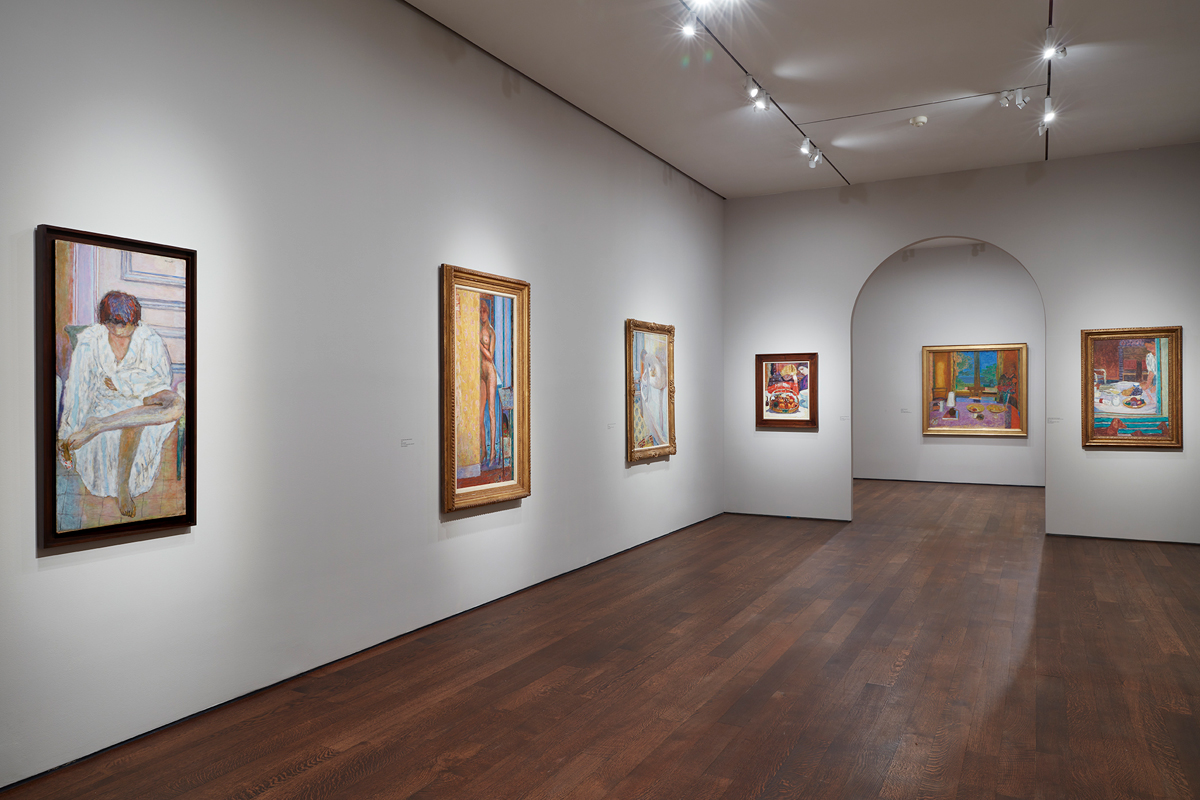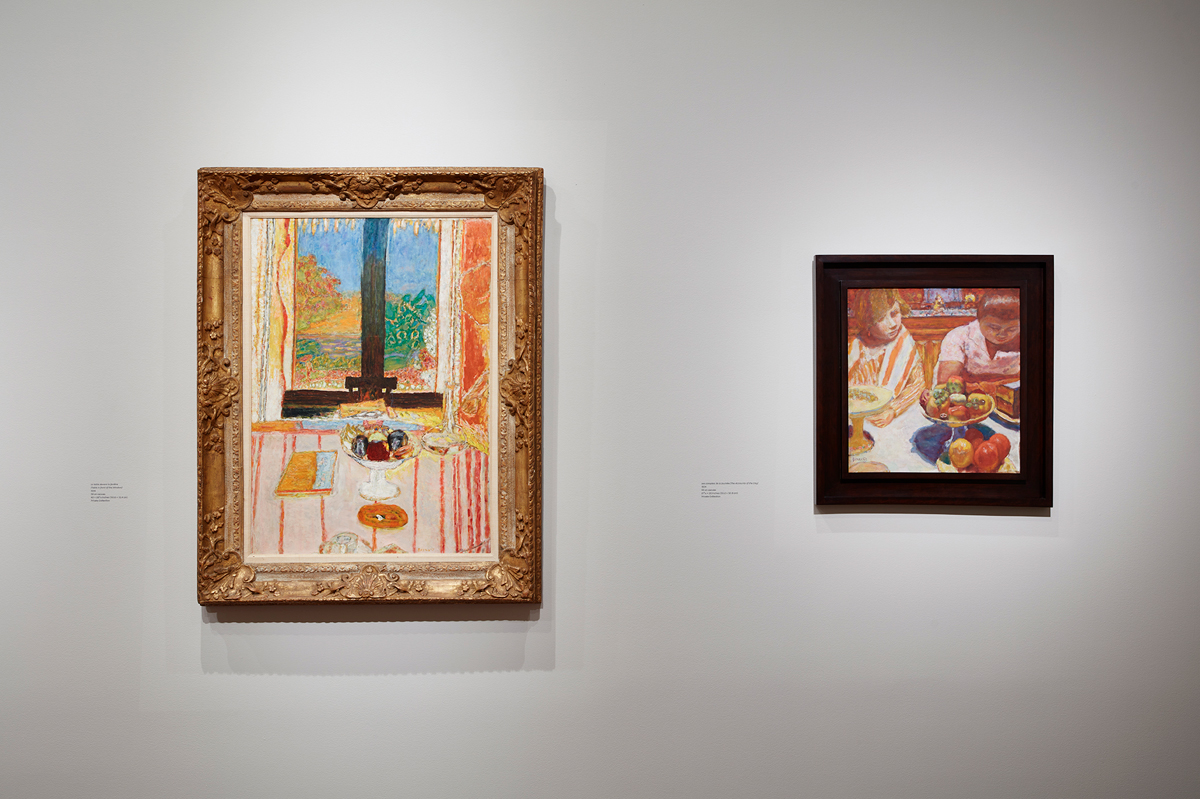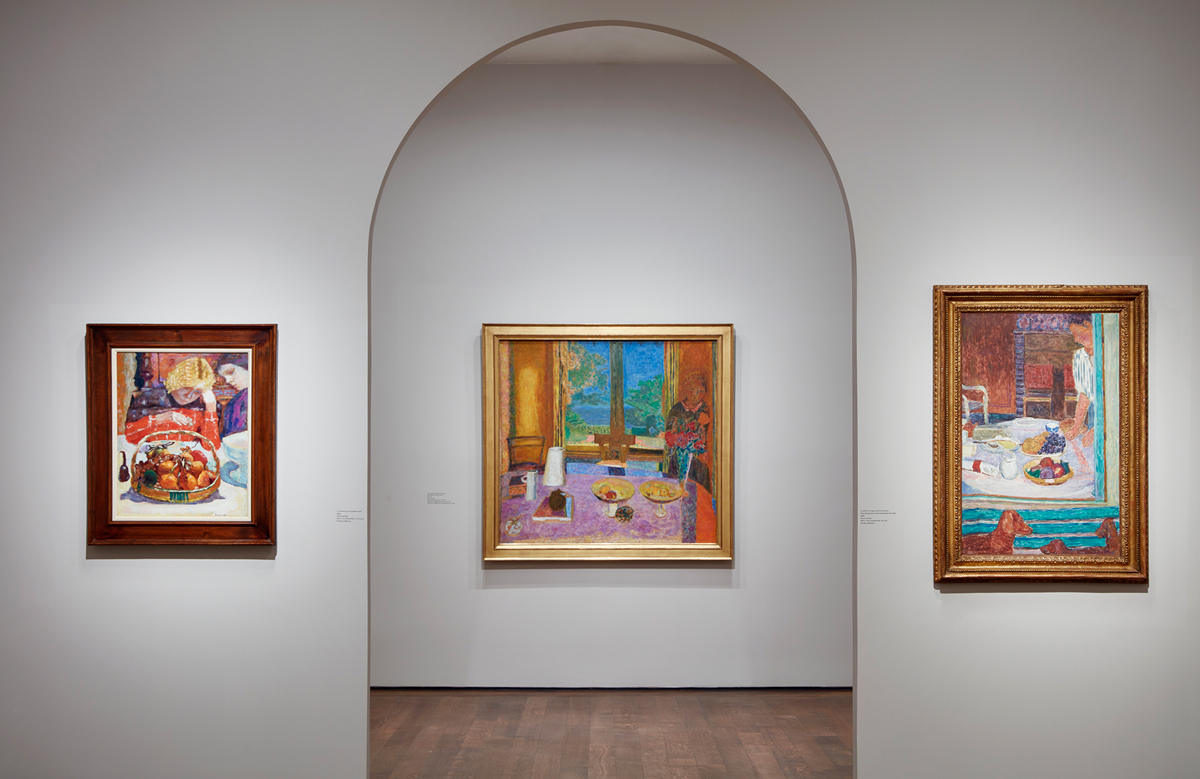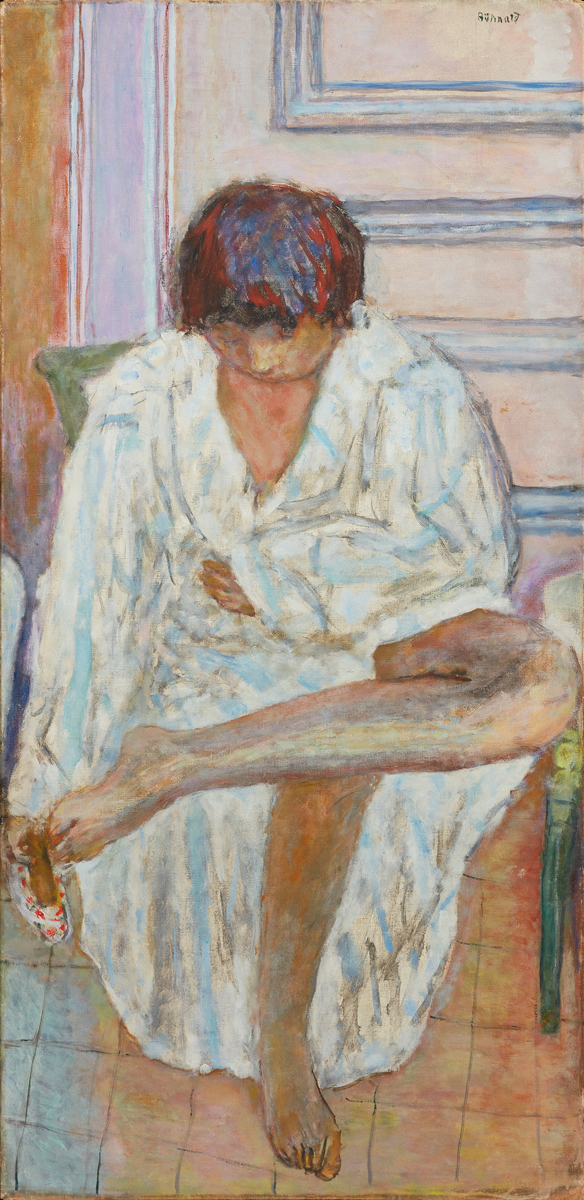 Sasha Frere-Jones
Sasha Frere-Jones
Realism forsook for ecstatic color in an exhibit of late works by the early modern painter.

Bonnard: The Experience of Seeing, installation view. Courtesy Acquavella Galleries.
Bonnard: The Experience of Seeing, Acquavella Galleries, 18 East Seventy-Ninth Street, New York City, through May 26, 2023
• • •
Pierre Bonnard made the twenty-one furiously saturated paintings now on show at Acquavella Galleries in the last three decades of his life, from 1916 to 1946. After his death, various Modernist cops came for Bonnard, largely accusing him of not being sufficiently part of one school or another. This isn’t technically wrong. Bonnard wasn’t a Cubist or a Pointillist, and his subjects were consistent and anodyne: his wife, Marthe; tables; fruit; and the landscapes he could see from different houses in the south of France. If you dashed through the Acquavella exhibit, small and perfect, you could be forgiven for thinking “I can bring the parents here” after seeing three rooms full of oils that present as legible and sweet. But Bonnards don’t stay sweet, given time. His faith in the psychotic powers of color deepened over his career, and grew ecstatic in the five years before his death in 1947. Bonnard’s eye was never genteel, even when the settings were. Photography, only coming into its own as Bonnard faded, still struggles to compete with his multi-chromatic sprawl.

Bonnard: The Experience of Seeing, installation view. Courtesy Acquavella Galleries.
It would be inaccurate to cast Bonnard as some kind of marginal traditionalist unappreciated during his life. He was tight with Matisse, and their friendship (as recorded in their collected letters) was very much about the work. Both were fans of Japanese prints, shown at the École des Beaux-Arts and sold as cheap reproductions on the street at the turn of the century. “I knew the Japanese only from copies and prints of poor quality which could be bought in the Rue de Seine by the entrance of the shops selling engravings,” Matisse wrote. “Bonnard said that he did the same and added that he was rather disappointed when he saw the originals.” What’s fascinating about their exchange is that it is essentially about technology, though it’s not clear what about the early printing process was either good or bad. Matisse referred to the “faded colors of the early print-runs,” but Bonnard went on to say that when he “came upon these somewhat crude popular pictures, I realized that color could express anything without resort to relief or modeling. It seemed to me that one could render light, shape, typical properties by color alone, dispensing with values.”

Bonnard: The Experience of Seeing, installation view. Courtesy Acquavella Galleries.
Bonnard’s early artistic cohort, the Nabis—from the Hebrew for “prophets”—were the Jets to the Impressionists’ Sharks, and some of their programmatic beef has not ported out to the present in a meaningful way. (The Nabis liked Mallarmé more than the Impressionists, though I can’t sense any direct influence in the paintings.) The crux of the matter came down to color and light: it was Bonnard’s deep belief that his technique of flooding the canvas with chroma, without recourse to naturalist perspective (“hey, look, that bit is further away”) or related techniques of illumination (“hey, look, the only light source is over there”), was enough to reveal the nature of time itself.

Bonnard: The Experience of Seeing, installation view. Courtesy Acquavella Galleries. Pictured, far right: Panier de fruits, ca. 1946.
The very late painting Panier de fruits (ca. 1946) shows the intensity that made Rothko a fan later in the century. The “flatness” Bonnard and the Nabis kept referring to seems to mean here that shadow is dispensed with (usually) and the tablecloth and wallpaper behind the basket are all rendered with relatively equal levels of light (white paint). What that does is collapse all the elements into a single unified field of time, so that anything might pull the focus of the eye. The deep indigo grapes seem to sparkle in the sun, and Bonnard has blurred the ovals of each grape and their reflections so that it all shakes. Mottled rose and dusty blue, the tablecloth swims so that it feels like you have been staring at the painting for ten minutes after just ten seconds. The yellow and blue wallpaper seems to walk in front of the basket, a structure outlined only weakly and overwhelmed by the fruit. Any sense that oil painting has become outdated or academic evaporates after a few minutes with a Bonnard like this, which embodies the primacy of vision and the ability of color to mediate that. As with Rothko, these blocks of color force you to be aware of how your own perception works. Slow down the cognitive processing demanded by “realism” and you get the quivering action of sight itself.

Pierre Bonnard, Coupe de fruits, 1933. Oil on canvas, 22 13/16 × 20 7/8 inches. Courtesy Philadelphia Museum of Art. © Artists Rights Society / ADAGP.
The Nabis crew owed their “flatness” to their hero, Gauguin, whose edges rarely quiver. Bonnard’s flatness is a livelier territory, and when he decides to highlight shadow and sun, he goes a bit mad. Coupe de fruits, from 1933, shows the fruits and table and pitcher and wall all crusted over with golden orange, the sun fully administrative of the scene. When Bonnard spoke of the “tyranny of color,” it was this kind of vision. He was painting from his notes and sketches (never directly from life) and let one small tranche of the spectrum reign over the picture, with the one refusenik the pig-shaped shadow cast by the bowl, so obstinate and dark that is seems less like a product of the light and more like a force of its own pushing back against the sun. The logic of the scene eventually comes down to the color, a fairly binary struggle between browns and gold that absorbs the room and the countryside.

Pierre Bonnard, Femme à sa toilette (Le peignoir), ca. 1923. Oil on canvas, 45 1/2 × 21 7/8 inches. © Artists Rights Society / ADAGP.
Marthe is in some of the paintings at Acquavella; Bonnard’s oft-cited tenderness comes through especially when she’s posing in the bathroom. (She was his water muse—a photo of her in the tub that Bonnard used as a reference is on view here.) His care is visible in the number of styles she ends up inhabiting. She is seen in certain works like a flash of light beside a yellow screen, and in Femme à sa toilette (Le peignoir), from ca. 1923, she is caught in a Bonnard vortex. Her robe is whitish blue, and her skin is a pinkish brown, which sets up a series of rhymes and clashes with the wainscoting behind her. She files her toenails with a flat lozenge while the tiles below zag in a way that demonstrates how little Bonnard cared for verisimilitude. The reflective surface of her hair tells us how wrong Picasso was to see Bonnard as safer in his “constructions” than the Cubist was in his “destructions.” Marthe’s face is lowered, eyes barely outlined and mouth almost invisible. Her hair, one assumes wet, is barking with blues and reds that suggest she is perhaps facing an open forest fire, a waterfall, or both. Color, here, has dragged Pierre and Marthe into a space that only color can rescue them from. Not that they need it.
Sasha Frere-Jones is a musician and writer from New York. His memoir, Earlier, will be published by Semiotext(e) in October of 2023.